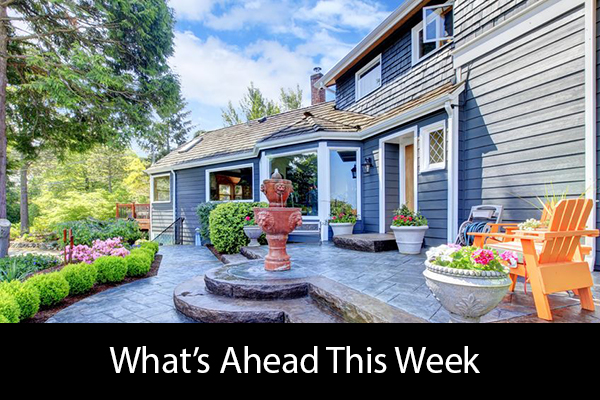 Case-Shiller’s 20-City Home Price Index for April showed further declines in home price growth with 2.50 percent year-over-year home price growth as compared to March home price growth of 2.60 percent. New York City home prices held steady month-to-month and Seattle, Washington’s home prices were unchanged year-over-year after posting 13 percent home price growth in 2018.
Case-Shiller’s 20-City Home Price Index for April showed further declines in home price growth with 2.50 percent year-over-year home price growth as compared to March home price growth of 2.60 percent. New York City home prices held steady month-to-month and Seattle, Washington’s home prices were unchanged year-over-year after posting 13 percent home price growth in 2018.
The top three cities with the highest rates of year-over-year home price growth were Las Vegas, Nevada with 7.10 percent growth; Phoenix, Arizona followed with 6.0 percent growth and Tampa, Florida reported 5.60 percent home price growth. All three cities were hard-hit during the recession. While U.S. home prices are rising, they aren’t rising as fast as in prior years. The fastest home price growth rates remained in single digits as compared to double digit home price growth rates posted in recent years.
Changing geography played a role in this year’s home price growth as San Francisco, California, Portland, Oregon and Seattle, Washington fell to sun-belt cities east of the west coast. Astronomical home prices and pronounced shortages of homes in many west coast cities caused home buyers to seek affordable homes elsewhere.
The Case-Shiller 10-City Home Price Index posted a year-over-year gain of 2.30 percent in April as compared to its March reading of 2.20 percent. Analysts said that slower gains for home prices indicated more normalized price conditions, but noted that home price growth remains about 1.50 percent ahead of inflation.
Buyers Benefit from Slower Home Price Growth, More Available Homes
First-time and moderate income home buyers were sidelined by competing investors and cash buyers as home prices rose quickly, but may find it easier to compete as market conditions achieve a balance of advantages to home buyers and sellers.
The flip side of easing home price growth may be that prospective buyers who are leery of buying at peak market prices will put off buying homes. Low mortgage rates continued to boost affordability and decreasing shortages of homes provided buyers with more options. Homebuyer sentiment is likely to vary according to economic trends, regional and personal circumstances.
If you are in the market for a new home or interested in listing your current property, be sure to contact your trusted real estate professional.
 For those who have less than a stellar credit history; yet, who still want to have their own home, a rent-to-own option is worth considering. A rent-to-own (RTO) agreement is a hybrid between buying a home and renting a home.
For those who have less than a stellar credit history; yet, who still want to have their own home, a rent-to-own option is worth considering. A rent-to-own (RTO) agreement is a hybrid between buying a home and renting a home. Federal Reserve policymakers held the federal funds rate at its current range of 2.25 to 2.50 percent. Analysts speculated that the Fed may lower its key rate based on signs of slowing economic growth and the President’s encouragement to lower the Fed rate.
Federal Reserve policymakers held the federal funds rate at its current range of 2.25 to 2.50 percent. Analysts speculated that the Fed may lower its key rate based on signs of slowing economic growth and the President’s encouragement to lower the Fed rate. Last week’s economic reports included monthly readings on housing market conditions, housing starts and building permits issued. Sales of pre-owned homes were released; the Federal Reserve announced its decision not to raise its key interest rate range. Weekly reports on mortgage rates and new jobless claims were also released.
Last week’s economic reports included monthly readings on housing market conditions, housing starts and building permits issued. Sales of pre-owned homes were released; the Federal Reserve announced its decision not to raise its key interest rate range. Weekly reports on mortgage rates and new jobless claims were also released. How does an average homeowner become a real estate investor? Certainly, owning a home is an investment in real estate. However, this guide discusses the next step for many to become a real estate investor. This is to buy another property and use it for a commercial purpose. Owning another home is less of a burden when an investor finds a way to make the home pay for itself.
How does an average homeowner become a real estate investor? Certainly, owning a home is an investment in real estate. However, this guide discusses the next step for many to become a real estate investor. This is to buy another property and use it for a commercial purpose. Owning another home is less of a burden when an investor finds a way to make the home pay for itself.